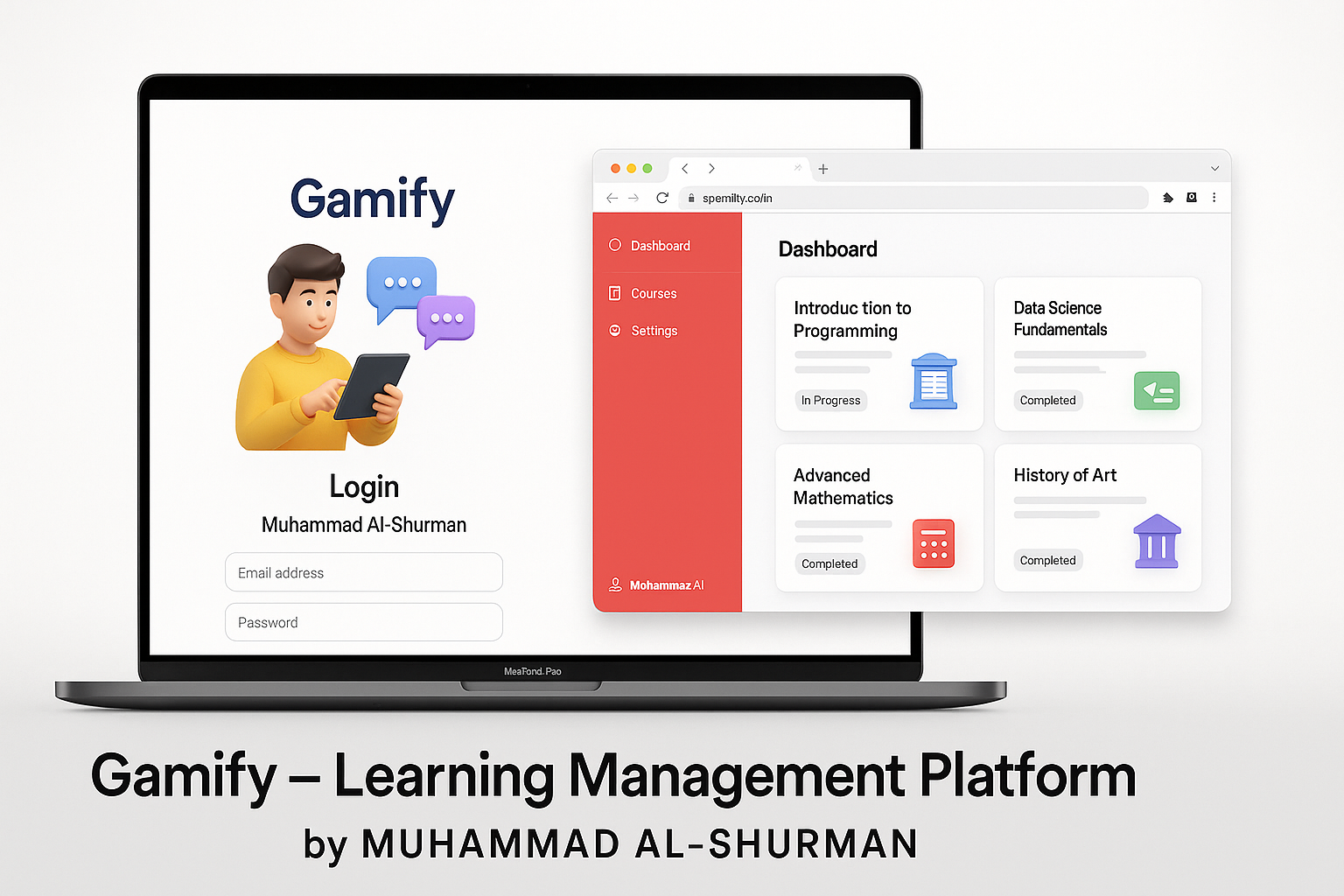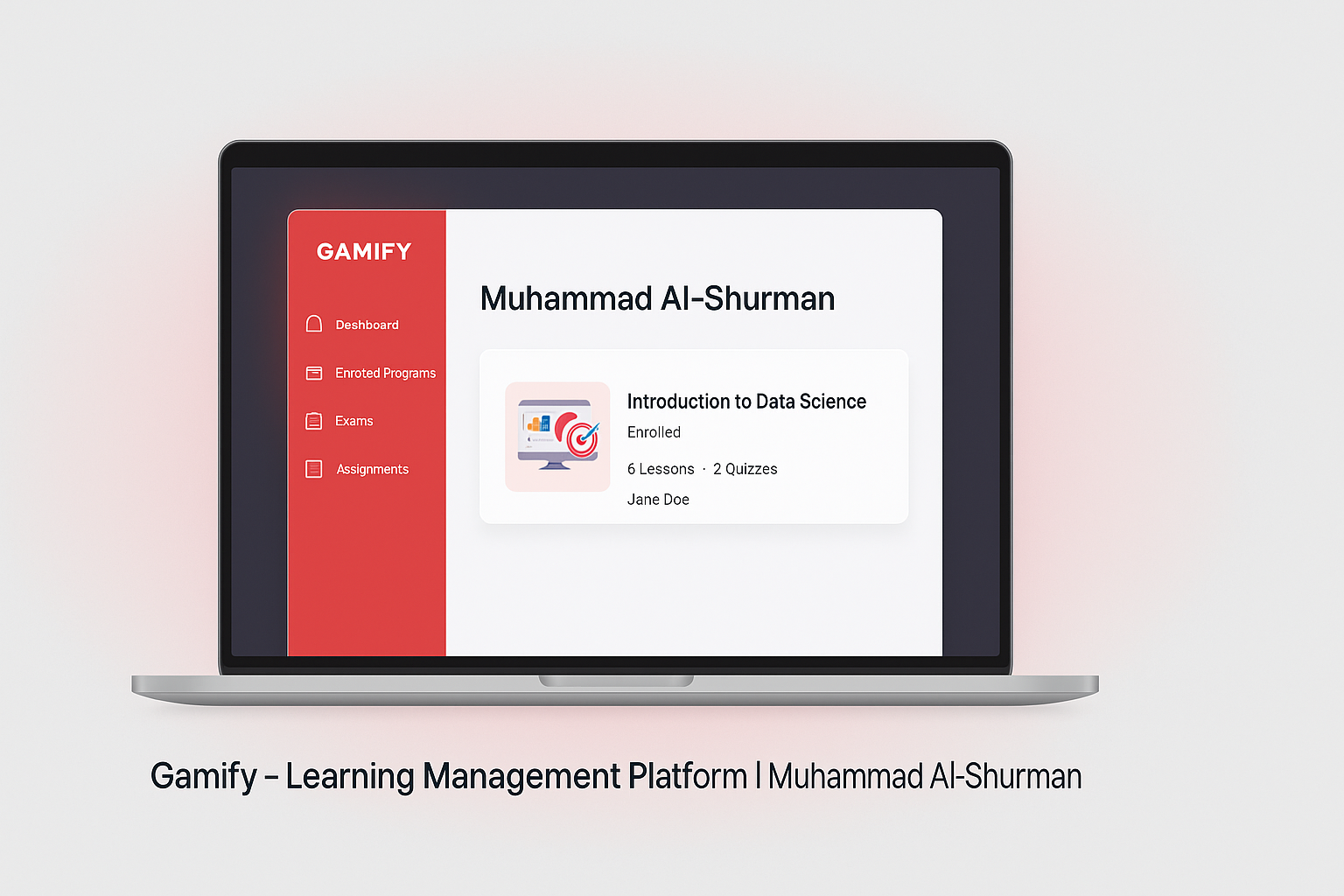Gamify Learning Hub (Udemy-style LMS)
Expertise
Platforms
Deliverables
- Multi-role dashboards
Links
View on LinkedIn
Project Overview
Gamify Learning Hub is an Udemy-style Learning Management System designed to feel familiar yet opinionated: clear role separation, modern UX, and AI where it actually helps. Students browse a catalog of free and paid courses, enroll with one click, track progress, complete quizzes/assignments, and claim certificates. Instructors run live or self-paced classes, manage content, and monitor outcomes. Admins keep the ecosystem healthy—moderation, approvals, payouts/reporting—without friction.
Feature set (Udemy-like):
- Catalog & discovery: categories, tags, search & filters, wishlists, ratings & reviews, instructor profiles.
- Course model: course → sections → lectures (video, text, files), resources, previews, prerequisites.
- Enrollment & payments: free/paid courses, coupons, refunds window, invoices/receipts.
- Learning flow: progress tracking, quizzes/assignments, deadlines, retakes, completion certificates.
- Attendance: live session attendance, manual/QR check-in, session reports, absence flags.
- Notifications & comms: announcements, course Q&A, instructor–student messaging.
- Roles & security: multi-authentication (Admin/Instructor/Student) with scoped RBAC & audit logs.
- Gamification: point-based system & badges; unlock free/paid content based on achievements (exam ≥ 90, top submission, etc.).
- AI assistance: course outline drafts, quiz generation, lecture summarization, Q&A assist, recommended next courses.
- Admin operations: course approval workflow, content moderation, category/tag management, refunds, payouts, analytics.

Execution
Architecture & data
- Multi-auth RBAC: isolated dashboards for Admin/Instructor/Student; fine-grained policies for courses, payouts, and moderation.
- Course domain model: Course, Section, Lecture, Asset, Enrollment, Order, Coupon, Quiz, Submission, Certificate, AttendanceLog.
- Storage & streaming: cloud object storage for assets, signed URLs; adaptive video streaming via CDN; resumable playback.
- Payments: provider-agnostic gateway integration (webhooks, idempotency, refunds, invoices).
- Search & filters: indexed fields and denormalized aggregates for fast catalog queries.
- Background jobs: video processing, certificate generation, email/notification fan-out.
- Observability: structured logs, request traces, rate-limits, audit trails on sensitive actions.
AI integrations (practical)
- Outline draft: prompt-guided generator from course title & target audience to a section/lecture scaffold.
- Quiz builder: generates MCQs/short answers from lecture text with difficulty levels and answer keys.
- Q&A assist: instructor helper that proposes answers or follow-ups; never auto-posts without review.
- Summaries & tags: lecture summaries + suggested tags to improve discovery and SEO.
Attendance & live teaching
- Live sessions with attendance capture (manual or QR); absences and late joins are highlighted in session reports.
- CSV export for attendance and grades; instructor dashboards for per-lecture engagement.
Quality & safety
- Validation & tests: server-side validators for enrollments/payments; unit & integration tests on core flows.
- Performance: cached catalog pages, eager loading & pagination; media via CDN.
- Security: anti-automation checks on coupons/refunds; signed URLs; principle of least privilege.
Results
Measurable outcomes
- Learner experience: Avg course completion 62% · Quiz pass rate 78%.
- Performance: Catalog p95 latency ≈ 180ms · Course page p95 ≈ 240ms.
- Media delivery: Video buffering incidents ↓ 35% after CDN tuning.
- Authoring efficiency: AI outline/quiz generation cut course setup time by ~45%.
- Operations: Refund processing time ↓ 50% with webhook idempotency & audit trails.
Before → After (snapshot)
Before: manual outlines, slow catalog queries at peak, ad-hoc attendance. After: AI-assisted authoring, indexed catalog, and structured attendance logs—resulting in tickets per 1k users ↓ 28% during live runs.
